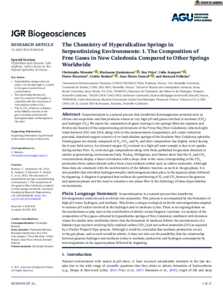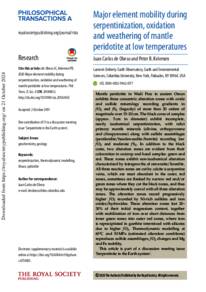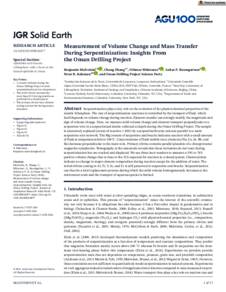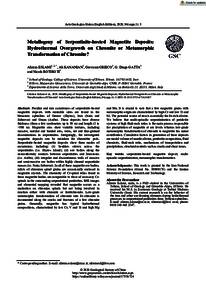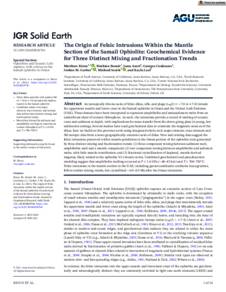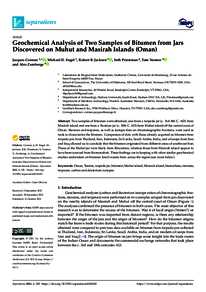Document
The chemistry of hyperalkaline springs in serpentinizing environments : 1. the composition of free gases in new caledonia compared to other springs worldwide.
Identifier
DOI: 10.1029/2021JG006243
Source
Journal of Geophysical Research: Biogeosciences. v. 126, 9, e2021JG006243
Contributors
Quéméneur, Marianne., Author
Price, Roy., Author
Jeanpert, Julie., Author
Maurizot, Pierre., Author
Boulart, Cédric., Author
Donval, Jean-Pierre., Author
Pelletier, Bernard., Author
Country
United States.
Publisher
John Wiley and Sons Inc.
Gregorian
2021-09-01
Language
English
English abstract
Serpentinization is a natural process that transforms ferromagnesian minerals such as olivine into serpentine and that produces waters at very high pH and gases enriched in methane (CH4) and hydrogen (H2). We report the composition of gases venting at two springs (Bain des Japonais and Rivière des Kaoris) of the serpentinizing environment of the Prony Bay (New Caledonia) collected eight times between 2011 and 2014, along with in situ measurements (temperature, pH, oxydo-reduction potential, dissolved oxygen content) of on-land alkaline springs of the Southern New Caledonia ophiolite. Venting gases are mainly composed of H2, CH4, and N2 and their composition has slightly varied during the 4-year field survey. An elevated oxygen (O2) content in a high-pH water sample is due to air uptake during surface flow. O2-corrected gas compositions along with those published for gas data obtained at similar serpentinizing environments (Italy, Turkey, Philippines, and Oman) show that the H2 and CH4 concentrations display a linear correlation with a slope close to the value corresponding to the CH4 production from carbon dioxide rather from a less oxidized carbon such as carbon monoxide. Although these data are consistent with the stoichiometry of the Sabatier reaction, as such in the gas phase, it is also possible that microbial hydrogenotrophic methanogenesis takes place in the aqueous phase followed by degassing. A diagram is proposed that outlines the partitioning of H2 and CH4 between the gaseous and aqueous phases and the need to consider a two-phase flow in the hydrology of these hyperalkaline environments.
ISSN
2169-8953
Category
Journal articles

